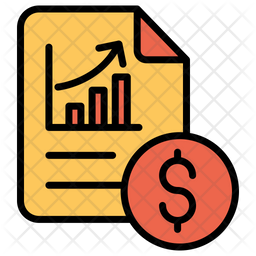
Global Collision Avoidance System Market 2020 (Includes Business Impact of COVID-19)
- TBI475286
- April 29, 2020
- Global
- 149 pages
- Market.US
“Global Collision Avoidance System Market Analysis Trends, Applications, Analysis, Growth, and Forecast to 2028” is a recent report generated by Trusted Business Insights. The global collision avoidance system market report has been segmented on the basis of technology, application, and region.
Request Covid - 19 Impact
Global Collision Avoidance System Market: Overview
Collision avoidance system also known as collision mitigating system or forward collision warning system, is a type of safety system used for prevention and reduction of severity any type of accident. Collision avoidance system uses various types of technologies such as cameras, RADAR, LIDAR, laser, ultrasound, etc. for its functioning. Collision avoidance system is used in airplanes, ships, submarines, cars, and railways.
Global Collision Avoidance System Market: Dynamics
Increasing adoption of automated braking systems in cars for improving safety is a key factor driving growth of the global collision avoidance system market. In addition, increasing focus of manufactures on vehicle safety, coupled regulations by New Car Assessment Program in various countries are also factors supporting growth of the global market. Furthermore, increasing demand for commercial vehicles and passenger cars is a factor expected to boost growth of the global collision avoidance system market over the forecast period.
However, high cost of collision avoidance system is a factor that could hamper growth of the global collision market. Nevertheless, growing installation of driver assistance systems and upcoming autonomous cars can create high revenue opportunities for players in the global collision avoidance system market.
Global Collision Avoidance System Market: Segment Analysis
Among the application segments, the automotive segment is expected to register high growth in terms of revenue in the near future. Increasing installation of collision avoidance system in vehicles to prevent damage to vehicle and driver and reduces severity of the collision is a factor supporting growth of this segment in the target market.
Among the technology segments, RADAR and camera segments are expected to register high growth in terms of revenue over the forecast period. RADAR provides accurate information regarding location and distance of object. Cameras are used for identification of objects. Combining two technologies provide efficient collision avoidance system is a factor expected to fuel growth of this segment in the global market in the coming years.
Global Collision Avoidance System Market: Regional Analysis
Market in Europe and North America accounted for major share in terms of revenue and is expected to maintain their position over the forecast period. According to regulations of European New car assessment program vehicles are required to installed emergency breaking system for improvement of safety. Stringent government rules and regulations by various countries in these regions is a key factor driving growth of the target market. Market in Asia Pacific is expected to register lucrative growth in terms of revenue in the near future. Increasing demand for luxury cars, coupled with increasing focus on road safety and government regulation in developing countries are factors fueling growth of the target market in this region. In addition, rising disposable income and increasing standards of living are also factors anticipated to support growth of the collision avoidance system in Asia Pacific over the forecast period.
Global Collision Avoidance System Market Segmentation:
Segmentation by Technology:
Ultrasonic
RADAR
Camera
LiDAR
Segmentation by Application:
Marine
Automotive
Railway
Aerospace
Others (Construction and Mining)
Table of Contents Chapter 1. Methodology and Scope 1.1. Research Methodology 1.2. Research Scope & Assumptions 1.3. List of Data SourcesChapter 2. Executive SummaryChapter 3. Global Collision Avoidance System Market Outlook 3.1. Market Segmentation 3.2. Market Size and Growth Prospects, 2016 - 2027 3.3. Value Chain Analysis 3.4. Market Dynamics 3.4.1. Market driver analysis 3.4.2. Market restraint analysis | read more...



















